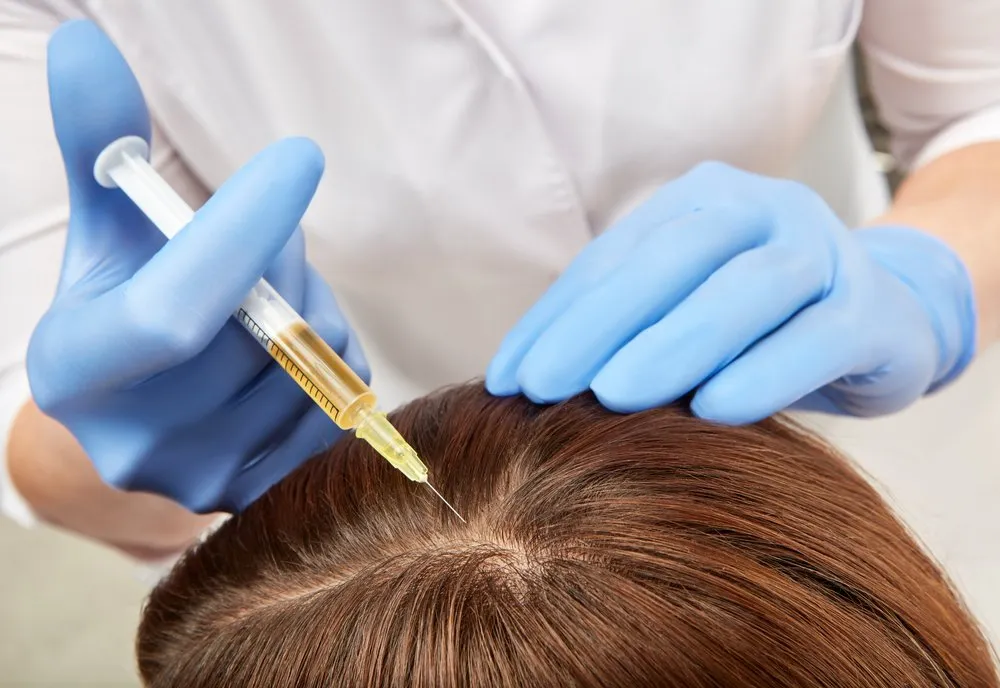Are you experiencing unexplained hair thinning and wondering, Can parathyroid cause hair loss? The parathyroid glands, which regulate calcium and bone health, can also influence hair growth when they malfunction.
In this article, you’ll learn how parathyroid disorders affect hair, what diagnostic tests reveal, and the realistic timelines for recovery after treatment.
With insights from medical studies and patient experiences, this guide provides expert-backed clarity to help you take the right steps toward restoring your hair and overall health.
What Are Parathyroid Disorders?

Overview of the Parathyroid Glands
The parathyroid glands are four tiny glands located behind the thyroid in the neck. They produce parathyroid hormone (PTH), which regulates calcium and phosphorus levels in the blood, vital for bone strength, muscle contractions, and nerve signaling.
Types of Parathyroid Disorders
- Hyperparathyroidism (overactive glands): Excess PTH causes high calcium levels (hypercalcemia).
- Hypoparathyroidism (underactive glands): Low PTH leads to low calcium and high phosphorus levels.
Why These Conditions Matter for Hair Health
Hair follicles rely on proper calcium balance, vitamin D function, and hormone regulation. Disruption of these systems may trigger changes in hair texture, thinning, or even noticeable hair loss.
How Parathyroid Dysfunction May Lead to Hair Loss
Hyperparathyroidism and Hair Loss
Patients with primary hyperparathyroidism often report diffuse hair thinning, particularly in women. Studies and clinical reports suggest that excess calcium and disrupted vitamin D metabolism can weaken follicles and disturb the hair growth cycle.
Hair and Skin Changes in Hypoparathyroidism
In hypoparathyroidism, hair loss may occur alongside brittle nails, dry skin, and coarse hair texture. Low calcium and abnormal mineral balance affect keratin production and follicle health, leading to shedding.
Mechanisms at Play: PTH and Hair Follicles
Research indicates that PTH and PTHrP (parathyroid hormone–related peptide) interact with hair follicles, influencing their cycling between growth (anagen) and rest (telogen) phases. Dysregulation can push follicles prematurely into shedding phases.
Other Contributing Factors
- Vitamin D deficiency – common in parathyroid disorders, linked to hair thinning.
- Calcium imbalance – affects follicle health directly.
- Stress and fatigue – frequent symptoms of parathyroid disease that may worsen hair loss.
What Patients and Clinicians Are Observing
Clinical Notes
Endocrinologists often see generalized thinning rather than patchy bald spots in parathyroid patients. Women report worsening hair loss before surgery, followed by gradual regrowth after treatment.
Patient Experiences
On platforms like Mayo Clinic Connect, patients describe hair beginning to regrow 3–6 months post-surgery, with fuller recovery around 9–12 months.
Suggested Recovery Timeline
- 1–3 months post-treatment: Symptoms improve, shedding slows.
- 3–6 months: Visible regrowth begins.
- 9–12 months: Significant recovery of density.
Diagnosing the Cause of Hair Loss When Parathyroid Issues Are Suspected
Recommended Blood Tests
- PTH levels
- Calcium and phosphorus
- Vitamin D
- Thyroid panel (to rule out overlapping thyroid conditions)
Referral Path
- Endocrinologist – for parathyroid function testing and treatment.
- Dermatologist – for scalp and hair evaluation.
- Surgeon – if parathyroidectomy is indicated.
Treatment Pathways and Hair Recovery
Treating Hyperparathyroidism
- Minimally Invasive Parathyroidectomy (MIP): Standard treatment that normalizes calcium and improves hair and skin health.
- Post-surgery results: Patients typically notice hair thickening after 3–6 months.
Treating Hypoparathyroidism
- Calcium and Vitamin D supplementation
- Synthetic PTH injections (in select cases)
- Regular monitoring to prevent complications and support hair regrowth.
Adjunctive Hair Care Strategies
- Dermatologic treatments: Minoxidil, platelet-rich plasma (PRP)
- Nutrition: Balanced intake of protein, iron, and biotin
- Lifestyle: Stress management, adequate sleep, hydration

Recovery vs. Hair Regrowth Timeline (Example Table)
| Stage | Health Changes | Hair Regrowth Notes |
|---|---|---|
| 1–3 months | Fatigue improves, calcium stabilizes | Hair shedding slows |
| 3–6 months | Symptom relief continues | New baby hairs visible |
| 9–12 months | Full hormonal balance | New baby hairs are visible |
FAQs
Can parathyroid problems cause hair loss even if thyroid tests are normal?
Yes. Even with normal thyroid function, parathyroid imbalance can disrupt calcium and vitamin D, leading to hair changes.
How long after treatment will my hair likely recover?
Most patients notice improvement within 3–6 months, with fuller regrowth by 9–12 months.
Are there topical treatments that help accelerate hair regrowth?
Yes, treatments like minoxidil or PRP therapy may help boost follicle activity alongside parathyroid treatment.
Should I see a dermatologist or an endocrinologist first?
If you suspect hormone-related hair loss, start with an endocrinologist to test parathyroid function. A dermatologist can support hair care during recovery.
Next Step
If you’re struggling with unexplained hair loss and suspect a hormonal cause, don’t wait. Parathyroid disorders can impact more than just your bones; they can affect your confidence, appearance, and well-being.
Book a consultation with Dr. Rana Irfan in Islamabad today to get an expert diagnosis, treatment, and a personalized plan for both your health and hair recovery.
